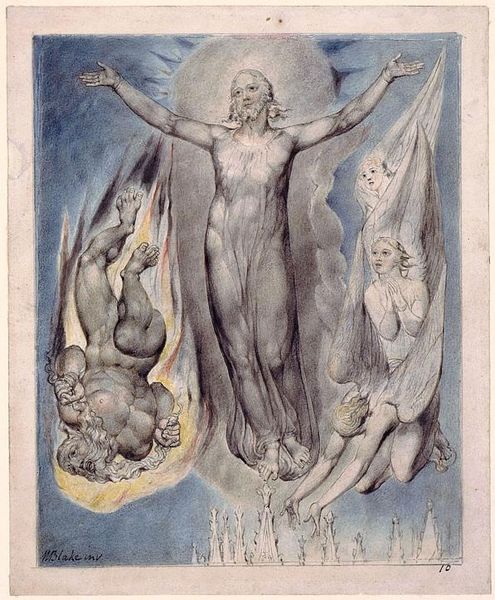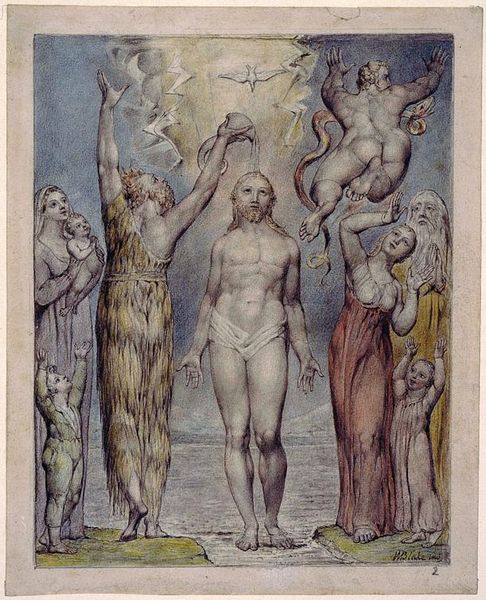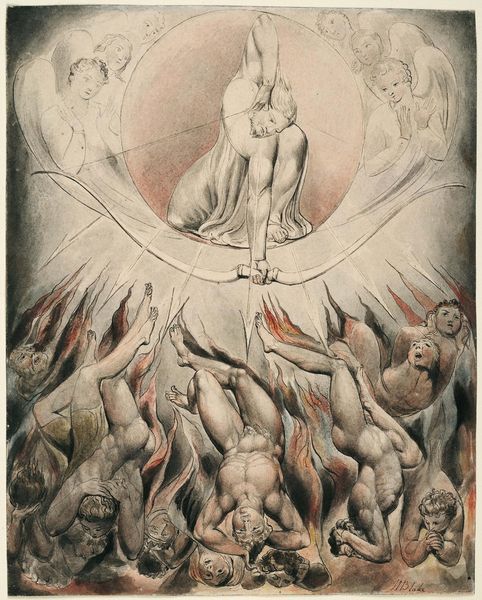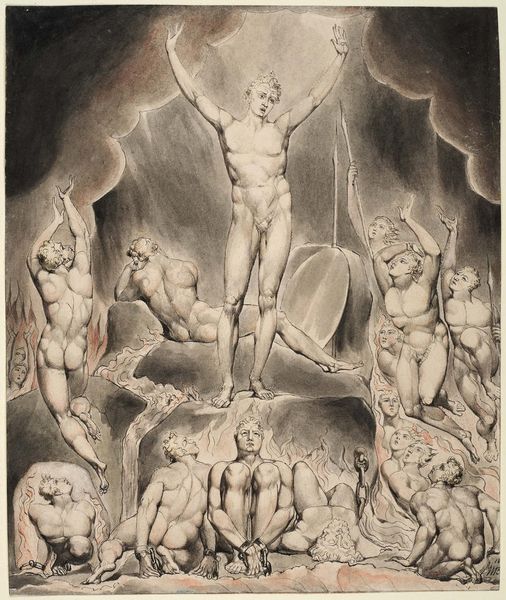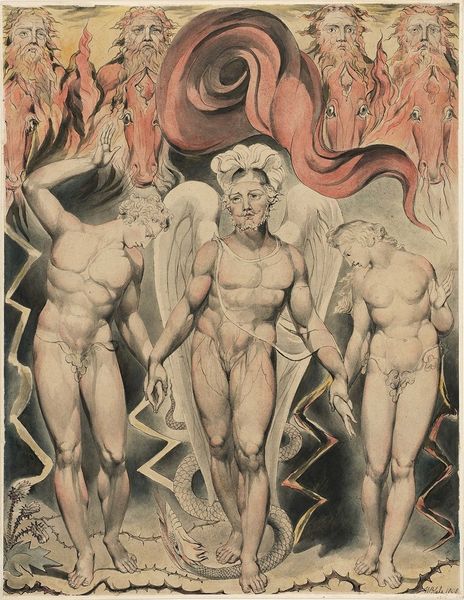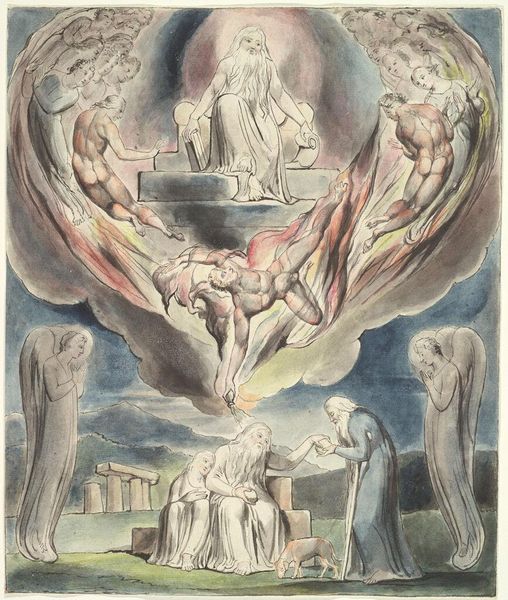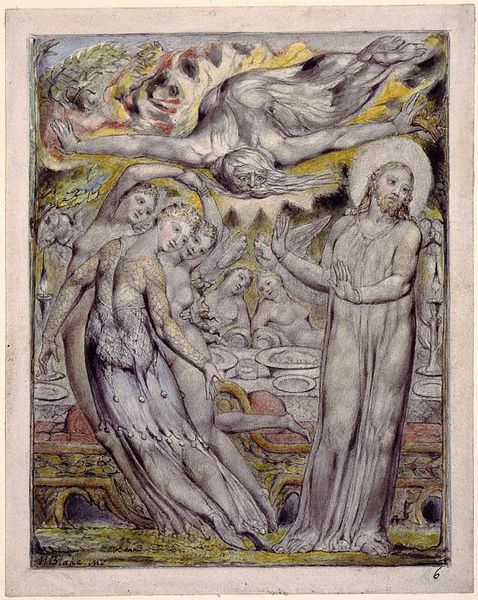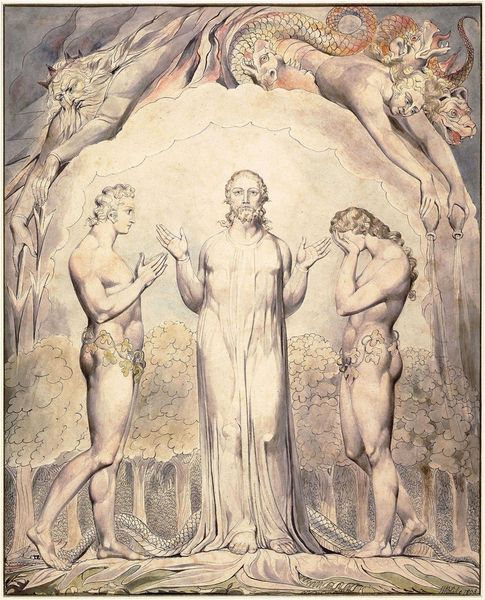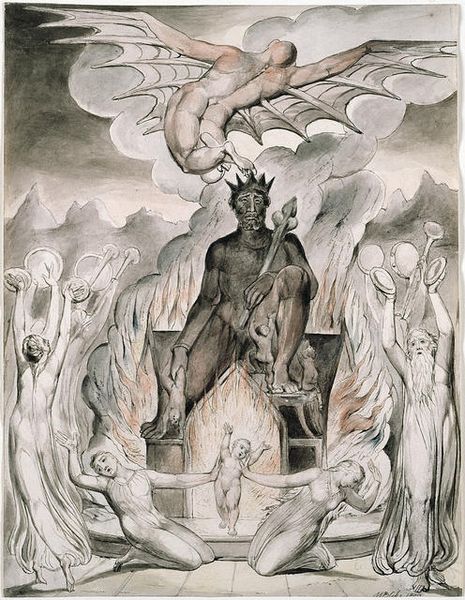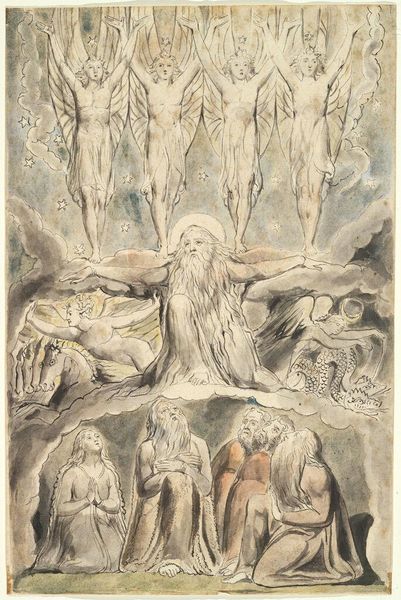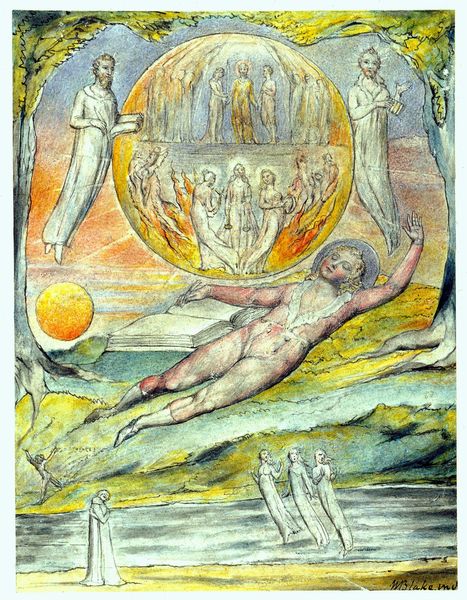
Satan Addressing his Potentates 1818
0:00
0:00
williamblake
Fitzwilliam Museum (University of Cambridge), Cambridge, UK
painting, watercolor
#
allegory
#
painting
#
fantasy-art
#
figuration
#
oil painting
#
watercolor
#
romanticism
#
mythology
#
history-painting
#
nude
#
watercolor
Dimensions: 13.3 x 17.3 cm
Copyright: Public domain
Curator: William Blake's "Satan Addressing his Potentates," completed around 1818, is currently held at the Fitzwilliam Museum. The artwork employs watercolor and ink. What are your initial thoughts on the piece? Editor: My immediate reaction is to the unusual palette – this smoky, muted wash. It contributes to a sense of dramatic and hellish unreality, doesn't it? Curator: It's more than just dramatic; it's a profound exploration of power dynamics. The image speaks to the seductive allure of rebellion and the corrupting influence of authority, specifically within a patriarchal and religiously bound society. Editor: I see what you mean. Certainly the composition, with Satan elevated on what looks like a rudimentary throne and gesturing grandly, directs our eye upwards. Blake has managed to suggest a monumental scale despite, as I understand, this work being quite small in reality. Curator: Absolutely. And let’s consider Blake’s radical politics and anti-establishment views. The "potentates" are not simply his subjects, but rather, a collective embodiment of oppressive forces he critiqued in his other writings. Look closely at the range of figures surrounding Satan. There are depictions of anguish and complicity intertwined. Blake positions Satan as a charismatic leader, yes, but the work overall challenges the viewer to analyze the ethics behind revolutionary leaders. Editor: It's curious that he’s depicted nude – as are many of the other figures. Is Blake perhaps stripping away any superficial markers of status? Curator: Precisely. He uses the nude figure to convey vulnerability, truth, but also, dare I say, to subvert conventional beauty standards, further questioning the very notions of perfection and divinity. Editor: The figures emerge, literally, from a haze, a formlessness… Curator: A suggestion, perhaps, of potential still in its formative stages—ripe for manipulation by persuasive rhetoric or the intoxicating promise of liberation. Blake provides us a very nuanced depiction. Editor: Thinking about the overall design and those carefully constructed lines, the artwork has really highlighted to me how Blake can make theological concepts both beautiful and frightening at once. Curator: It does indeed provoke a reaction, urging us to consider historical contexts alongside the painting's formal qualities, ultimately to address the eternal issues surrounding power, resistance, and moral responsibility.
Comments
No comments
Be the first to comment and join the conversation on the ultimate creative platform.
